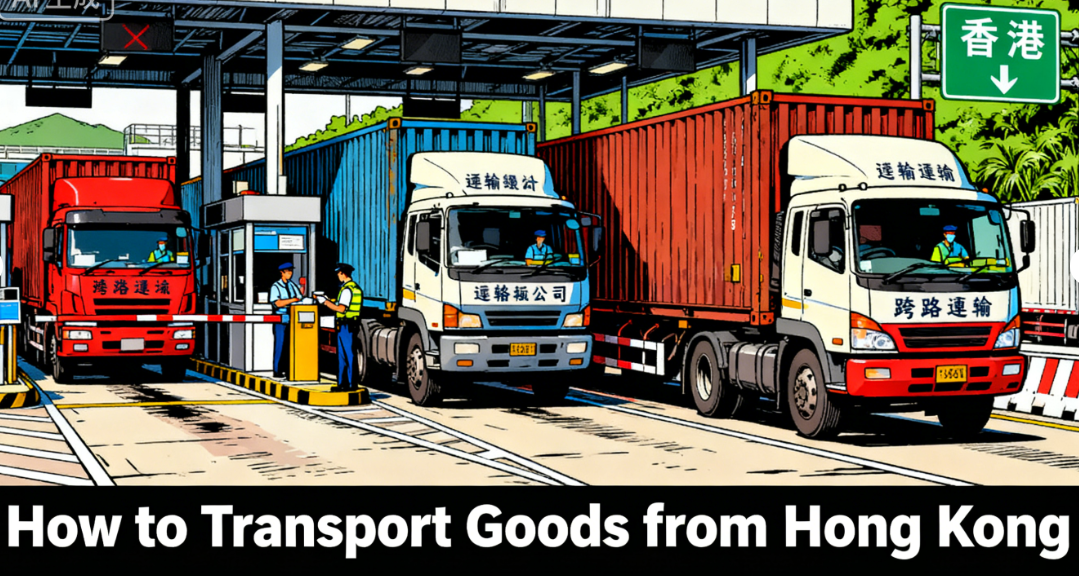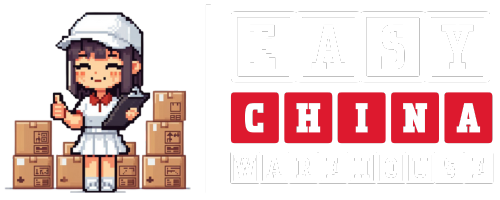Login
How to Transport Goods from Hong Kong to Mainland China

Navigating the logistics of moving your products from Hong Kong to Mainland China is a critical step for many businesses. Whether you are a cross-border e-commerce seller on Amazon, Walmart, or Shopify, a manufacturing company, or a global retailer, understanding this route is key to a smooth and efficient supply chain.
Hong Kong, with its world-class port and free trade status, is a major global logistics hub. Many goods enter Hong Kong first before being distributed to the mainland. This guide will walk you through the primary methods, key considerations, and how to choose the right partner for your China shipping and logistics needs.
Why is Hong Kong a Key Gateway?
Before we dive into the “how,” let’s understand the “why.” Hong Kong offers distinct advantages:
- Free Port Status: No tariffs or customs duties on imports or exports (except for specific goods).
- Efficient Infrastructure: One of the world’s busiest and most efficient container ports and airports.
- Strategic Location: Ideally situated at the heart of Asia, with excellent connectivity to the Pearl River Delta and beyond.
- Mature Logistics Ecosystem: A wide range of experienced freight forwarders, warehousing providers, and logistics companies.
For international sellers, goods often arrive in Hong Kong from overseas factories before the final leg into mainland China for fulfillment or further distribution.
Main Methods for Transporting Goods from Hong Kong to Mainland China
The best transportation method depends on your cargo’s volume, urgency, and budget.
1. Express Air Freight
This is the fastest option, ideal for small, high-value, or urgent shipments.
- How it works: Couriers like DHL, FedEx, and SF Express handle the entire process, including customs clearance.
- Best for: Small parcels, documents, and samples for e-commerce sellers who need speed.
- Pros: Door-to-door service, rapid transit (1-3 days), high reliability.
- Cons: The most expensive option per kilogram.
2. Standard Air Freight
A cost-effective alternative to express services for larger volumes.
- How it works: Your goods are consolidated with other shipments on a pallet or in a loose cargo hold. A freight forwarder manages the process from the Hong Kong airport to a designated airport in mainland China (e.g., Shanghai, Beijing, Shenzhen).
- Best for: Medium-volume, time-sensitive goods that don’t justify the express premium.
- Pros: More affordable than express for larger volumes, still relatively fast.
- Cons: Requires coordination with a freight partner, not door-to-door without additional arrangements.
3. Ocean Freight (LCL & FCL)
The most economical choice for high-volume, non-urgent cargo.
- LCL (Less than Container Load): Your goods share a container with other shippers. Perfect for cross-border e-commerce businesses that don’t fill an entire container.
- FCL (Full Container Load): You rent an entire container for your goods. Ideal for large retailers and manufacturing companies with consistent, high-volume shipments.
- Best for: Heavy, bulky, and non-perishable goods. Common routes are from Hong Kong to ports like Yantian, Shekou, or Nansha.
- Pros: Lowest cost per unit, environmentally friendly for large volumes.
- Cons: Slowest transit time (can take weeks), requires more complex customs brokerage.
4. Land Transport (Trucking)
The workhorse for regional logistics, especially within the Greater Bay Area.
- How it works: Goods are transported by truck through land border crossings like Shenzhen Bay or Lok Ma Chau.
- Best for: Shipments from Hong Kong to destinations in Guangdong province and Southern China. It’s often used as the final leg for air or sea freight.
- Pros: Highly flexible and cost-effective for regional distribution, direct to many inland cities.
- Cons: Can be subject to border crossing delays, less suitable for very long-distance hauls across China.
Key Considerations for a Smooth Shipping Process
Simply choosing a method isn’t enough. Success hinges on managing these critical elements:
- Customs Clearance: This is the most complex part. Mainland China has strict import regulations. You must provide accurate documentation, including a commercial invoice, packing list, and certificate of origin. Partnering with a logistics provider who has expert customs brokerage services is non-negotiable.
- Trade Compliance: Ensure your products are allowed to be imported and comply with all Chinese standards and labeling requirements.
- Taxes and Duties: Understand your liability for VAT and import duties. Your logistics partner can help you calculate these costs to avoid surprises.
- Cargo Insurance: Protect your investment against loss or damage during transit. This is a small price for significant peace of mind.
How to Choose the Right Logistics Partner
Your choice of a freight forwarder or China logistics company can make or break your supply chain. Look for a partner that offers:
- Proven Expertise: Specific experience in handling Hong Kong to mainland China transport.
- Integrated Services: A one-stop-shop for warehousing in China, customs clearance, and final-mile delivery.
- Technology: A transparent platform for tracking shipments and managing inventory.
- Reliability and Communication: A partner who is responsive and proactive in solving problems.
Simplify Your Supply Chain with Easy China Warehouse
Navigating the journey from Hong Kong into Mainland China doesn’t have to be a headache. At Easy China Warehouse, we specialize in providing seamless shipping and logistics solutions for cross-border e-commerce sellers, manufacturers, and retailers like you.
We manage the entire process for you, from receiving your goods in Hong Kong to handling complex customs clearance and delivering them to our secure fulfillment centers in mainland China. From there, we can store your inventory and fulfill orders directly to your customers across the globe.
Ready to optimize your supply chain? Contact us today to get a personalized quote and discover how we can make your goods transportation from Hong Kong to China effortless and efficient.
